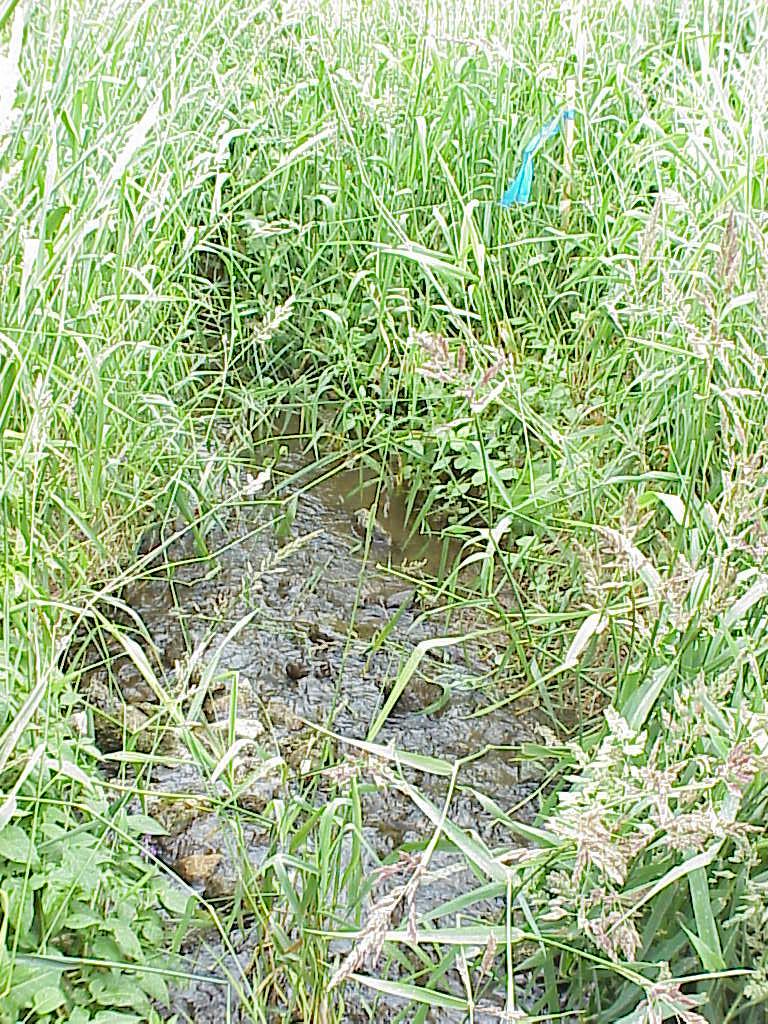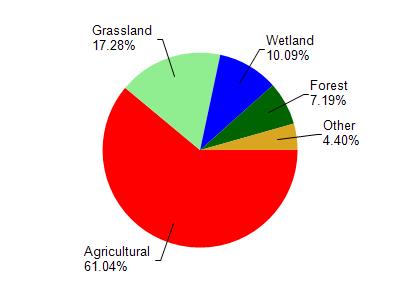
4.25 Miles
0 - 4.25
Cool-Warm Headwater
2025
Poor
Degraded Biological Community
Total Phosphorus
Kewaunee
No
No
Yes
Fish and Aquatic Life
Overview
Luxemburg Creek is a three-mile long, moderate to high gradient (18-62 feet per mile) stream tributary to the Kewaunee River. The creek has poor base flow and is limited to supporting forage fishes throughout most of its length. The stream is heavily channelized along State Highway 54. Water quality has improved substantially throughout the stream since the Luxemburg wastewater treatment plant was upgraded in 1978 and moved its discharge location from Luxemburg Creek to the Kewaunee River.
From: Willman, Guy and Mike Toneys. 2001. The State of the Lakeshore Basin. Wisconsin Department of Natural Resources, Madison, WI.
Date 2001
Author Michael Toneys
Impaired Waters
Luxemburg Creek was recently evaluated during the ten-year period of 2009 through 2018 for results that were reported to the USEPA for the 2020 Clean Water Act condition report. The waterbody is considered impaired, or in poor condition for designated uses which include the quality of fish and aquatic life, recreational use, and public health and welfare (fish consumption and related). Pollutants or problems encountered during sampling (impairments) are determined based on water quality standards outlined in Wisconsin 2020 Consolidated Assessment and Listing Methodology (WisCALM). Assessment results show water conditions that are potentially harmful for Aquatic Life use due to values for total phosphorus and biological indicators that fall into the range expected for an aquatic community in poor health, therefore this water is listed as impaired.
Assessment results during the 2020 listing cycle show impairment by total phosphorus. Levels were found to be too high for healthy aquatic communities (plants, bugs, fish, etc.) based on 2020 WisCALM standards, and biological impairment was observed (at least one fish Index of Biotic Integrity scored in the poor condition category). Based on the most updated information, this water was proposed for the impaired waters list in 2020.
Date 2019
Author Ashley Beranek
Condition
Wisconsin has over 84,000 miles of streams, 15,000 lakes and milllions of acres of wetlands. Assessing the condition of this vast amount of water is challenging. The state's water monitoring program uses a media-based, cross-program approach to analyze water condition. An updated monitoring strategy (2015-2020) is now available. Compliance with Clean Water Act fishable, swimmable standards are located in the Executive Summary of Water Condition in 2018. See also the 'monitoring and projects' tab.
Reports
Management Goals
Wisconsin's Water Quality Standards provide qualitative and quantitative goals for waters that are protective of Fishable, Swimmable conditions [Learn more]. Waters that do not meet water quality standards are considered impaired and restoration actions are planned and carried out until the water is once again fishable and swimmable
Management goals can include creation or implementation of a Total Maximum Daily Load analysis, a Nine Key Element Plan, or other restoration work, education and outreach and more. If specific recommendations exist for this water, they will be displayed below online.
Monitoring
Monitoring the condition of a river, stream, or lake includes gathering physical, chemical, biological, and habitat data. Comprehensive studies often gather all these parameters in great detail, while lighter assessment events will involve sampling physical, chemical and biological data such as macroinvertebrates. Aquatic macroinvertebrates and fish communities integrate watershed or catchment condition, providing great insight into overall ecosystem health. Chemical and habitat parameters tell researchers more about human induced problems including contaminated runoff, point source dischargers, or habitat issues that foster or limit the potential of aquatic communities to thrive in a given area. Wisconsin's Water Monitoring Strategy was recenty updated.
Grants and Management Projects
| Project Name (Click for Details) | Year Started |
|---|
|
|
Monitoring Projects
| WBIC | Official Waterbody Name | Station ID | Station Name | Earliest Fieldwork Date | Latest Fieldwork Date | View Station | View Data |
|---|
| 92100 | Luxemburg Creek | 313015 | Luxemberg Creek - Tn Rd North Sth 54 | 10/30/1975 | 10/30/1975 | Map | Data |
| 92100 | Luxemburg Creek | 313014 | Luxemberg Creek - Sth 54 | 10/30/1975 | 10/30/1975 | Map | Data |
| 92100 | Luxemburg Creek | 10041141 | Luxemburg Creek 3m US Heritage Rd | 8/27/2013 | 1/1/2015 | Map | Data |
| 92100 | Luxemburg Creek | 313165 | Luxemburg Creek at Valley Road | | | Map | Data |
| 92100 | Luxemburg Creek | 10007958 | Luxemburg Creek 1 (at Valley Rd) | 4/3/2000 | 10/6/2025 | Map | Data |
| 92100 | Luxemburg Creek | 313013 | Luxemberg Creek - 1st Tn Rd Below Stp | 10/30/1975 | 11/5/1979 | Map | Data |
|

Watershed Characteristics
Luxemburg Creek is located in the Kewaunee River watershed which is 142.12 mi². Land use in the watershed is primarily agricultural (61.10%), grassland (17.30%) and a mix of wetland (10.10%) and other uses (11.60%). This watershed has 292.03 stream miles, 540.90 lake acres and 7,312.87 wetland acres.
Nonpoint Source Characteristics
This watershed is ranked High for runoff impacts on streams, Not Ranked for runoff impacts on lakes and High for runoff impacts on groundwater and therefore has an overall rank of High. This value can be used in ranking the watershed or individual waterbodies for grant funding under state and county programs.However, all waters are affected by diffuse pollutant sources regardless of initial water quality. Applications for specific runoff projects under state or county grant programs may be pursued. For more information, go to surface water program grants.
Luxemburg Creek is considered a Cool-Warm Headwater under the state's Natural Community Determinations.
Natural communities (stream and lake natural communities) represent model results and DNR staff valiation processes that confirm or update predicted conditions based on flow and temperature modeling from historic and current landscape features and related variables. Predicated flow and temperatures for waters are associated predicated fish assemblages (communities). Biologists evaluate the model results against current survey data to determine if the modeled results are corect and whether biological indicators show water quaity degradation. This analysis is a core component of the state's resource management framework. Wisconsin's Riverine Natural Communities.
Cool (Warm-Transition) Headwaters are small, sometimes intermittent streams with cool to warm summer temperatures. Coldwater fishes are uncommon to absent, transitional fishes are abundant to common, and warm water fishes are common to uncommon. Headwater species are abundant to common, mainstem species are common to absent, and river species are absent.